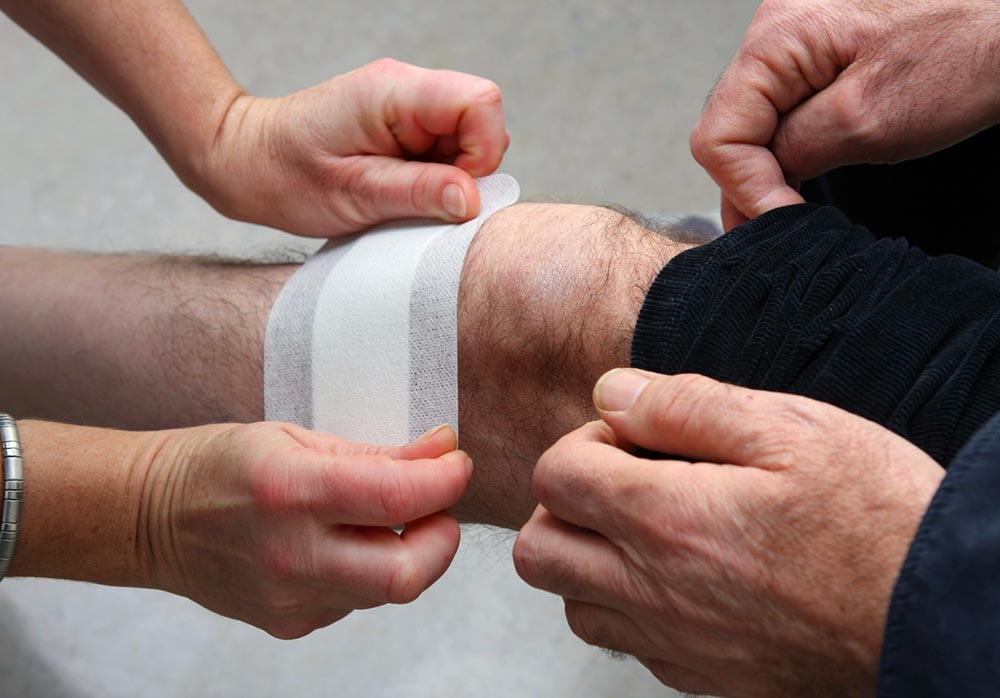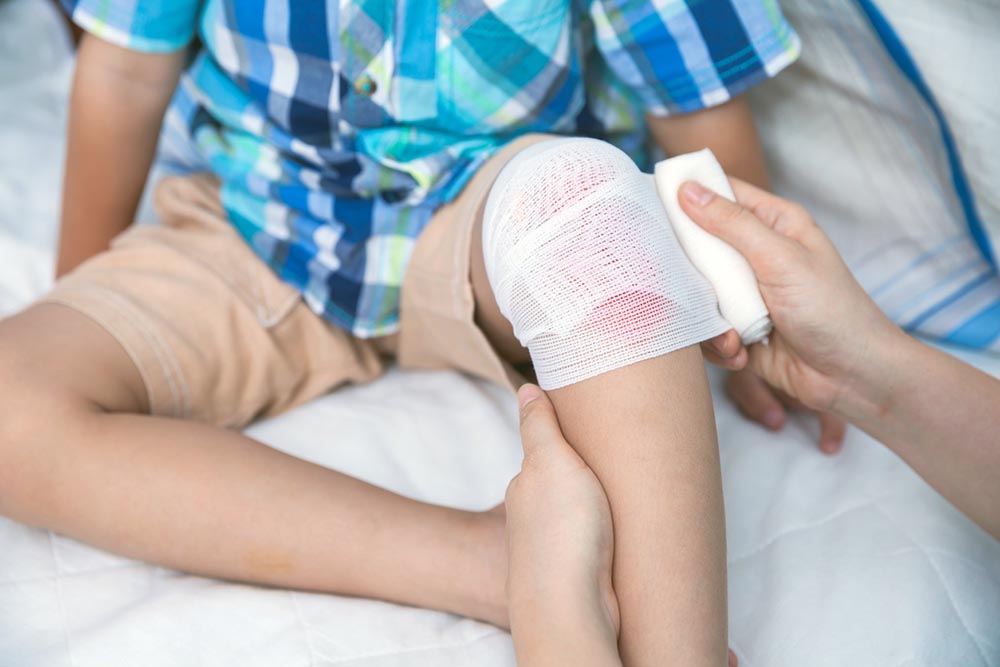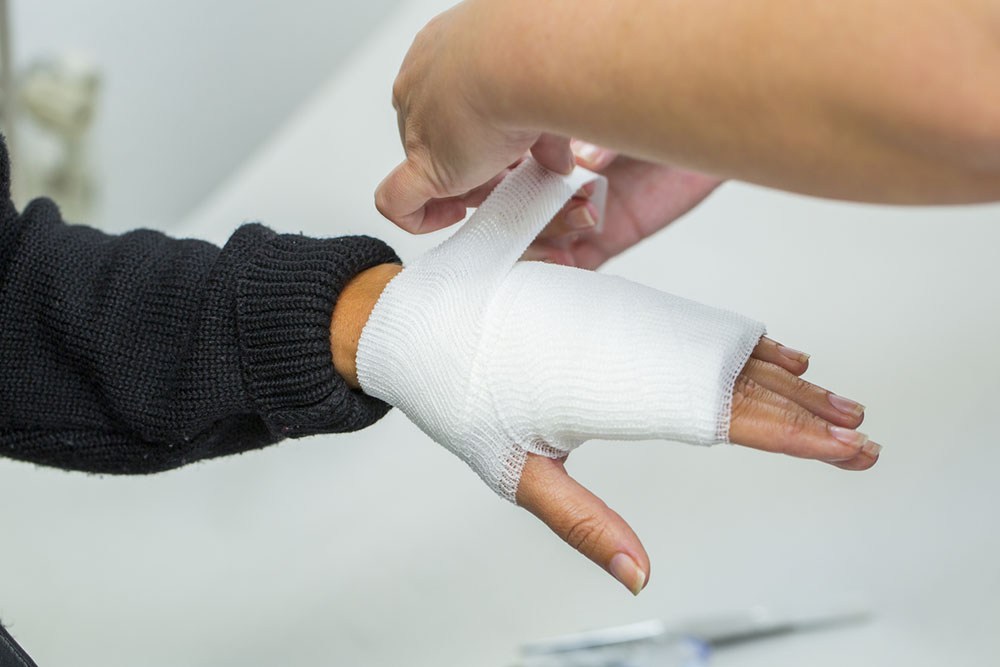What Is Wound Management?
Wound management is the process of treating wounds after surgery or injury. When discussing the types of wounds that an individual might need taking care of, the most common ones include:
- Punctures and cuts
- Burns
- Bites
- Pressure ulcers
- Diabetic foot ulcers
- Post-surgery wounds
It’s crucial to understand that wound management is an essential part of the healing process of anyone inflicted with a wound. Proper wound healing can help individuals avoid infection or other serious health concerns.
Individuals experiencing wound-related challenges may benefit immensely from appropriate care and support. Adequate wound care can help individuals regain their health, mobility, and overall quality of life.
Hence, it is crucial to understand what proper wound management is and how you can provide it for your loved one.
Meaning of Wound Care
Proper wound care can minimise emotional burdens and physical challenges individuals tend to experience when having a wound. This care can boost the healing process and provide the comfort and support individuals require after an injury or post-clinical surgery.
Wound management may include various medical treatments, wound cleaning, applying or dressing bandages, and medicine coordination. At Unique Community Services, we develop tailored wound care plans and cover all the needs required by the individual. Our goal is for your loved one to recover efficiently and gain independence as soon as possible.
Wound healing is a complex process, so it’s essential to understand its steps to take better care of your loved one.
7 Steps of Wound Care
The recommended steps below can help avoid infection, chronic wounds or other complications.
Additionally, a wound can be a source of great pain and discomfort – posing many different challenges and making the individual less independent than they were before. So, taking these steps can ensure a swifter recovery of individuals.
Wash HAnds
Infection is one of the biggest threats when individuals are going through wound healing. Hence, keeping things clean and sanitary, especially around the wound area, is crucial.
Washing hands with soap and water and applying moisturiser afterwards is required for proper wound management.
Stop the Bleeding
It’s important to note that not all individuals will bleed when having a wound. This depends on the type of wound and how the individual got inflicted with it.
However, in situations where the individual does bleed, it’s important to apply pressure to the wound. Additionally, this must be done with a clean bandage or cloth to avoid infection or other medical complications.
Clean the Wound
Cleaning the wound is an essential part of wound healing and management. With his step, you ensure the wound is clean of all debris or bacteria that may cause infection. Additionally, cleaning the wound of dead tissues and debris promotes new tissue to grow, which benefits the overall healing process.
It’s best to use running clean water on the wound, and individuals can use soap around the wound area but never inside it.
Apply Antibacterial Ointment
Individuals can apply antibacterial products to avoid infection. However, this should be practised only if the wound is minor. In any other case, medical professionals should take care of this step or give you direct advice.
Protect the Wound
The next step is to apply a bandage or any appropriate sterile dressing on the wound. This enables the wound and the skin around it to heal properly without getting infected.

Change the Dressing
Wound dressing needs to be changed at least once a day. Making sure your hands are clean and disinfected is crucial, as well as providing a sterile dressing.
During this step, it’s important to keep note of the progress of the healing process. Consulting with a medical professional on the colour and state of the wound is essential for proper wound management.
Observe Symptoms
There are a few things you should observe when taking care of a wound that could help reduce the risk of infection. These include:
- Signs of redness
- Signs of progressive swelling
- Unusual odour
- Darkening of the skin around the wound
- Thick or yellowish discharge
If you notice any of these signs, consult a medical professional.
Why Is Wound Care a Critical Part of Recovery?
Wound care is vital in the healing process and helps prevent other complications. Also, proper wound management can ensure tissue growth and prevent scarring.
So, whether the wound is a result of injury, chronic condition or clinical procedure – wound care plays a vital role in the physical and emotional recovery of the individuals.
The Importance of an Effective Wound Care
Providing tailored and supportive wound care can benefit one’s emotional well-being. It’s common for individuals to experience distress, anxiety, and discomfort when experiencing wounds.
So, effective wound care can speed up the healing process and help reduce these challenging feelings. Additionally, supportive wound management can promote confidence in one’s ability to recover – which is also a crucial part of the recovery process.
Importance of Frequent Wound Dressing
Wound dressing is one of the essential parts of wound healing. This process promotes oxygenation and circulation to the wound, which may result in a fast-paced recovery.
Forgetting to change the dressing of wounds may lead to infections and other unwanted conditions in individuals. Additionally, frequent wound dressing allows medical professionals to monitor the progress of the wound healing and take immediate action if needed.

Wound Management Goals
Wound management has a few essential goals, the most important being:
- Promote healing – all actions are taken as part of wound management, aim to facilitate the healing process of the wound
- Infection prevention – cleaning, frequent wound dressing, and disinfecting all prevent infections that can further complicate the recovery of wounds
- Pain management – wounds can cause pain and discomfort to individuals. So, one crucial goal is to make the whole process as painless and comfortable as possible
- Avoid scarring – it’s not unusual for wounds to leave scars; it is simply part of the healing process. However, proper wound management can ensure minimal scarring
Wound Management at Your Home
At Unique Community Services, we understand that recovering from wounds can be a challenging experience for individuals and their loved ones. Hence, we strive to minimise the worries, challenges, and discomfort of wound management.
We provide a bespoke service that covers all wound management needs from the comfort of your home.
So, whether you’re experiencing:
- Wounds from accidents
- Require after-hospital care
- Require post-surgery care
Our dedicated team of professionals will provide you with a personalised wound management plan to address your unique needs and requirements.
Unique Community Services believes everyone is different and deserves quality care. That’s why we’re committed to providing exceptional care to everyone we serve.
Learn how we can help you or a loved one with wound management.














